Rock, Paper, Scissors
18 Mar - 27 Apr 2022
Deptford


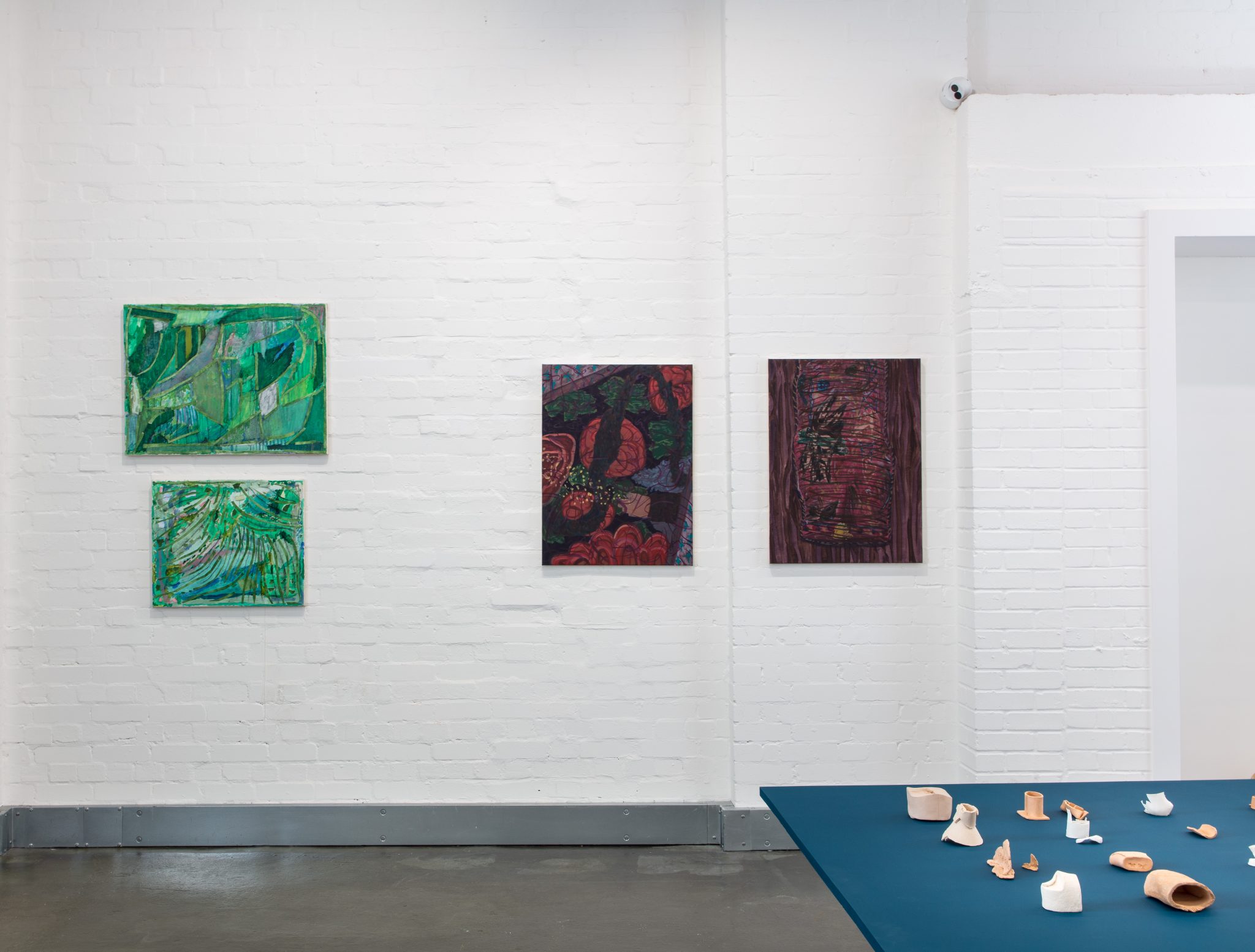
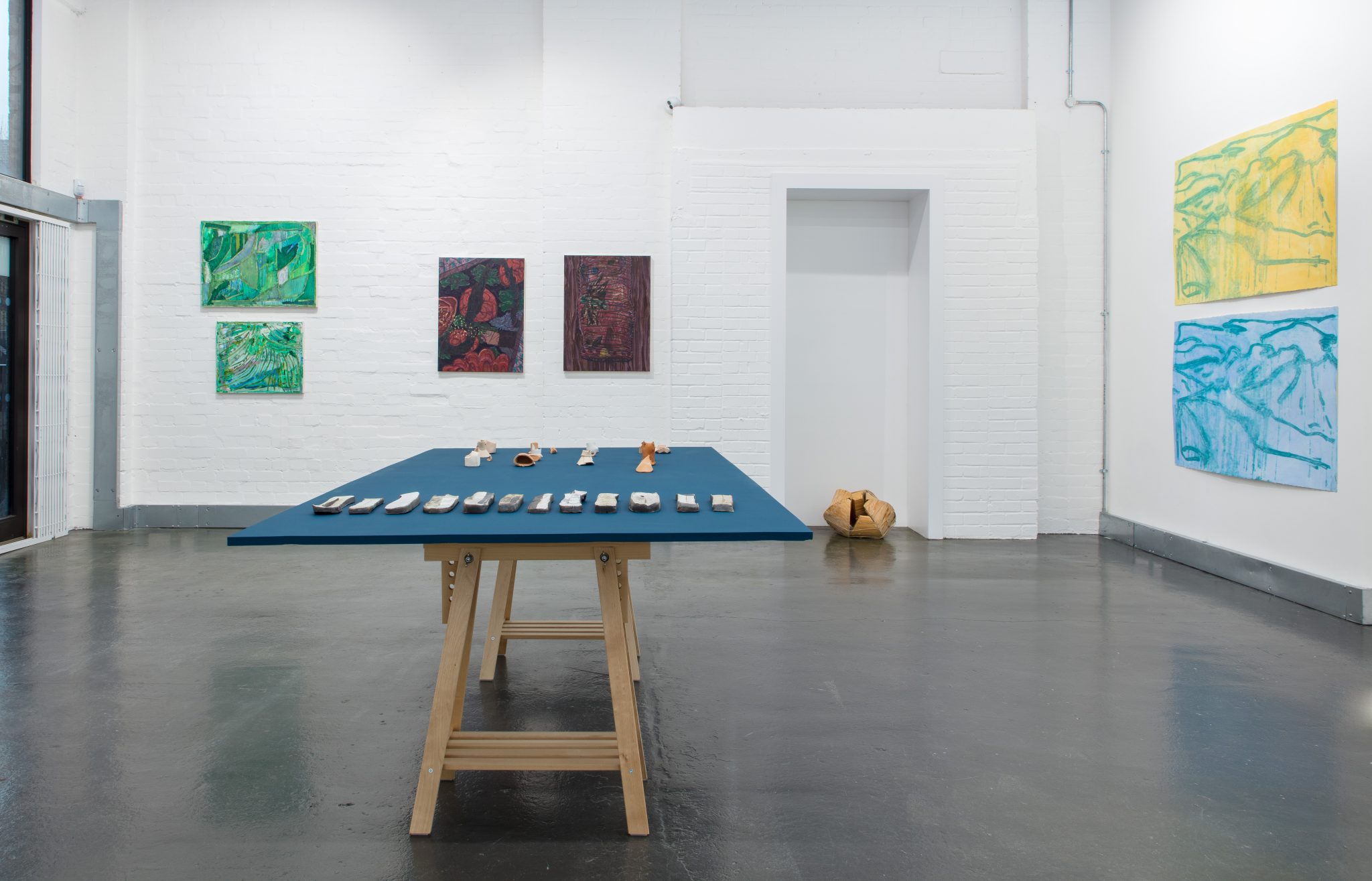
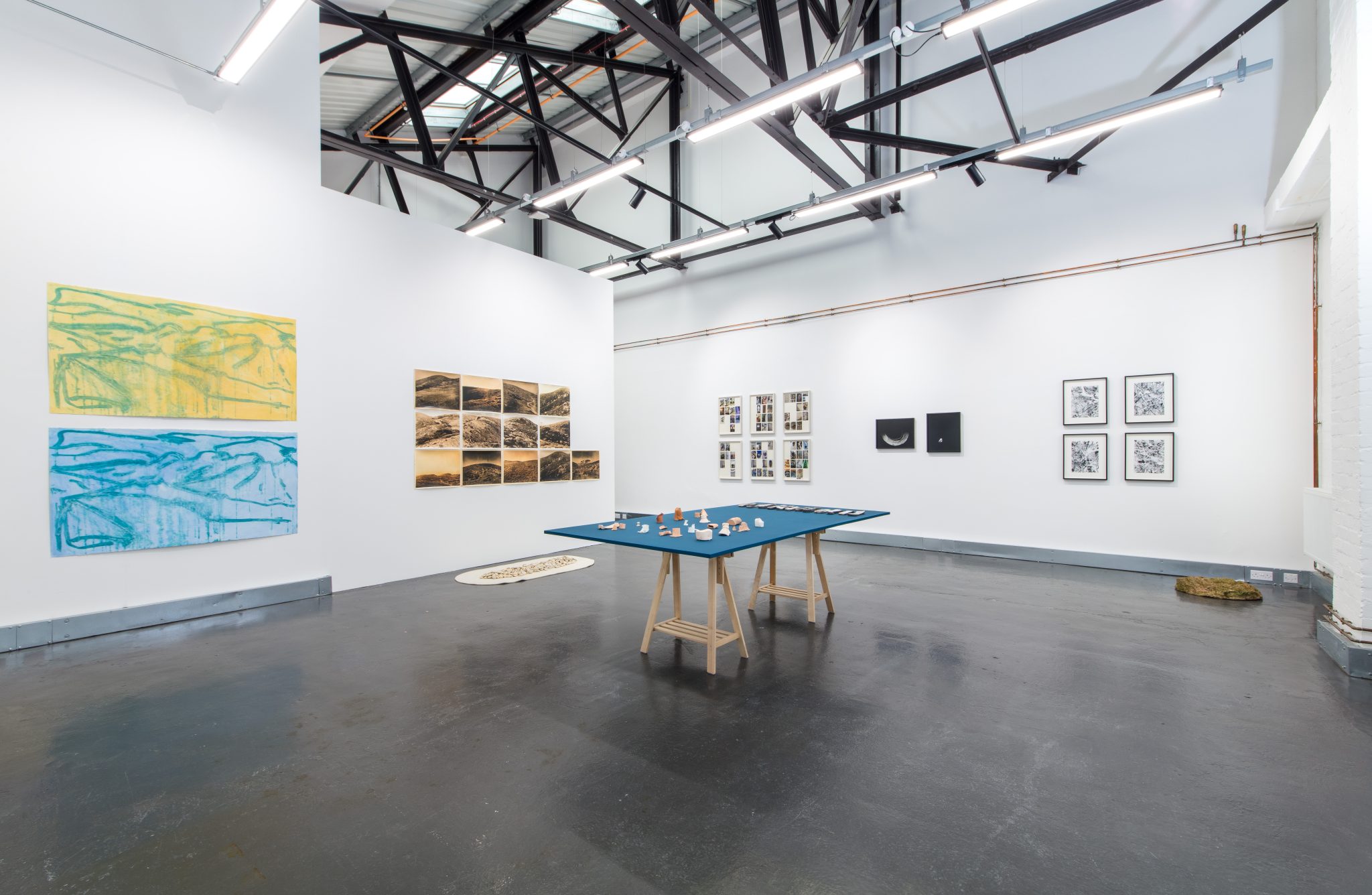
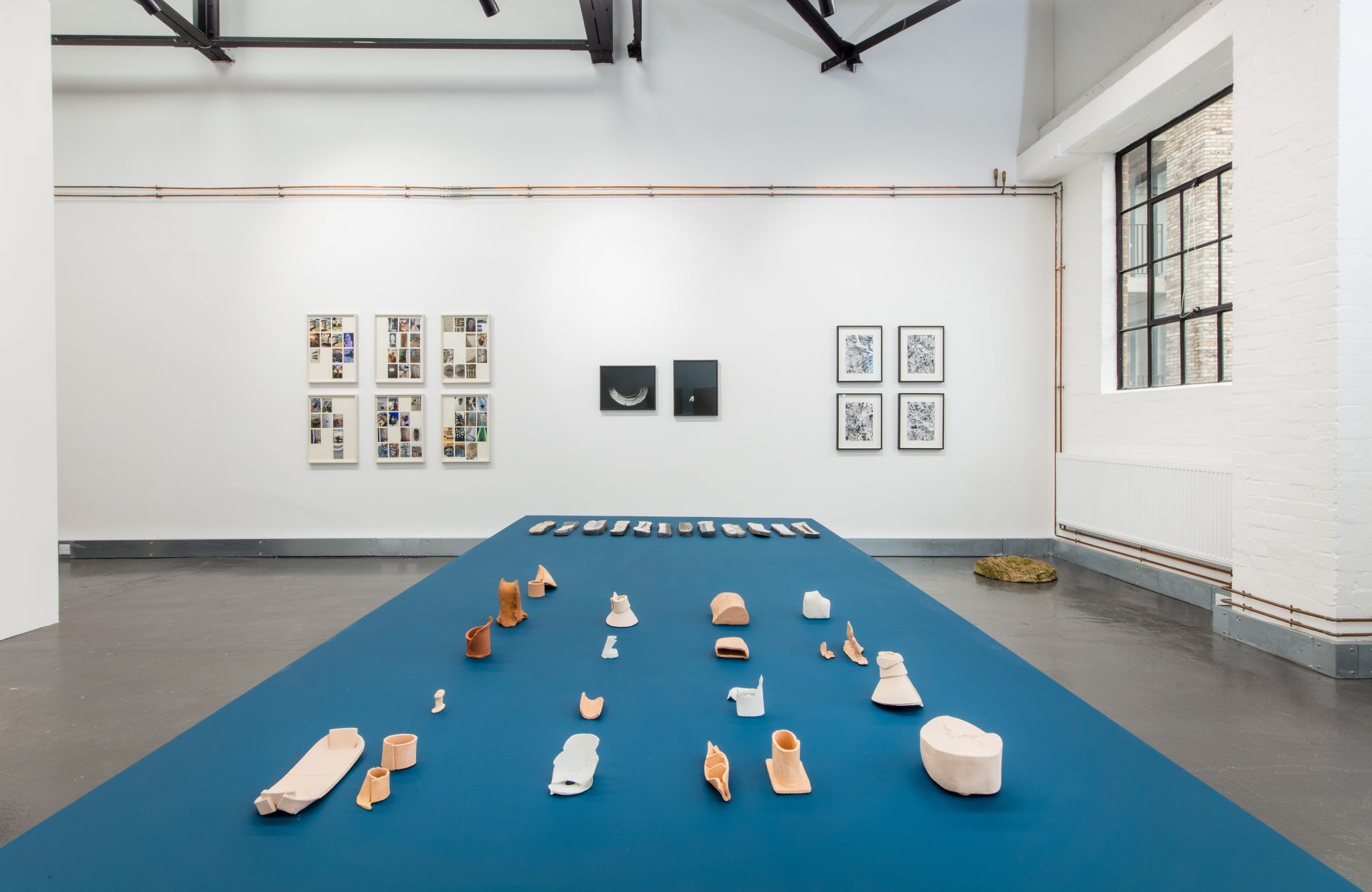
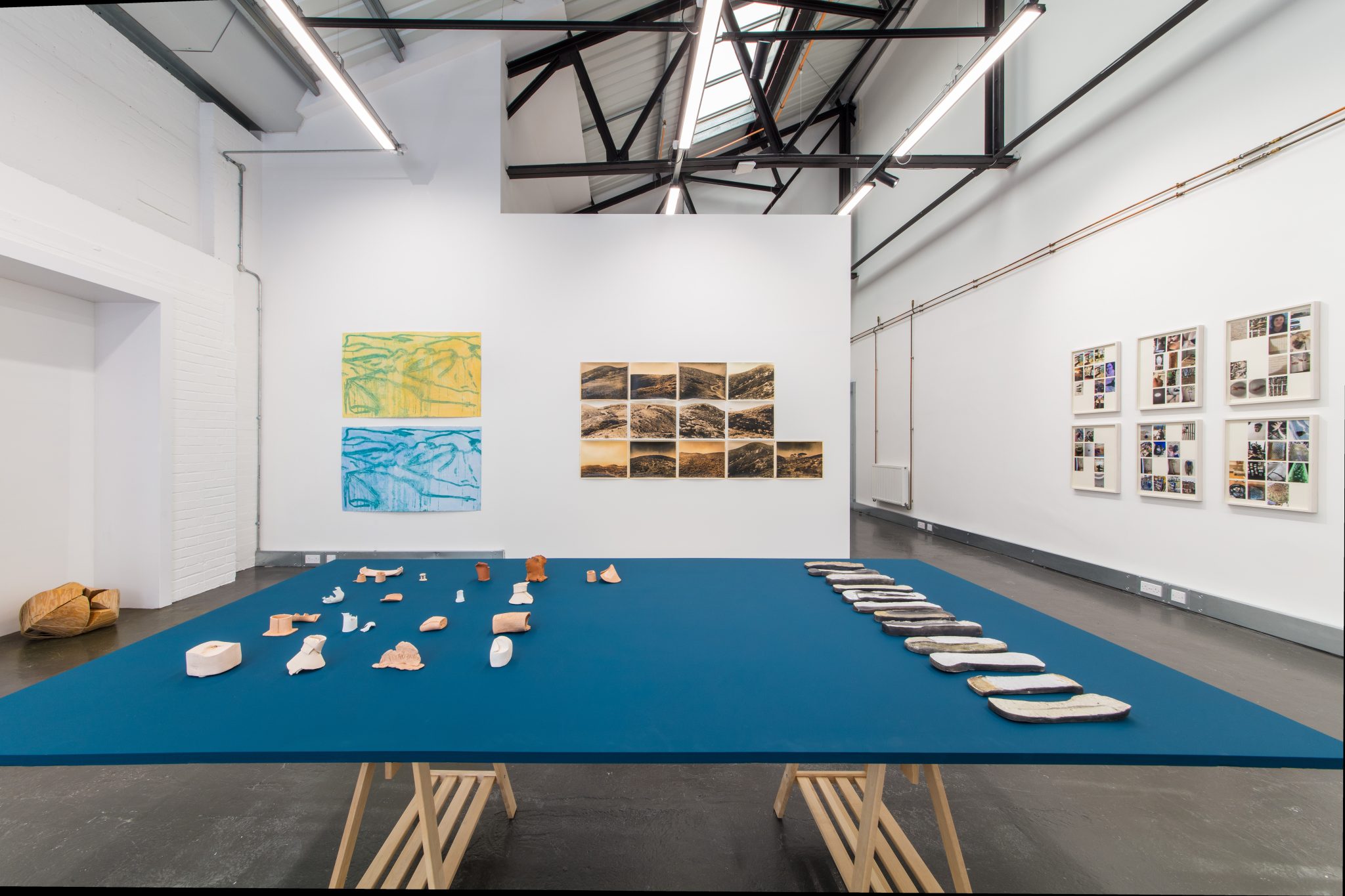
To inaugurate its 2022 calendar of exhibitions, ‘Rock, Paper, Scissors’, a group show that celebrates artists who have been involved with the gallery since its beginnings in 2015. Featuring, Theodore Ereira-Guyer, Petra Feriancová, Marta Jakobovits, Abraham Kritzman, and Sam Llewellyn-Jones.
The exhibition is curated by Maria do Carmo M. P. de Pontes.
For this presentation, we focus on sculptures, paintings, works on paper and collages that address, as their subject matter, elements such as stones, trees and minerals. That is to say, we exhibit Rocks, Papers and Scissors that, in a metalinguistic operation, address Rocks, Papers and Scissors as motifs.
Starting with the ‘Rocks’, Romanian grande dame Marta Jakobovits has been restless in exploring ceramics for over five decades. Her approach to sculpture making is analogue to that of an alchemist, in their shared pursuit of sourcing raw materials and observing how they react to different environmental conditions of heat, humidity and so on. Noteworthy, in the captions of the works she states the temperature in which the ceramics were burned, in addition to the materials that were employed, thus placing the heating process as unique experiences each time. Though she favours abstract shapes in her compositions – both geometric and organic ones, the latter alluding to the unprocessed matter as it exists in nature – she has casted the human body at times. On this occasion we show two of her compositions, each made by a combination of various elements. Pilgrim’s Footsteps (2016) consists of twelve sculptures whose oblong forms are reminiscent of footsteps; each of the objects present a unique shape, paint and glazing. Relics of Antecedents, also from 2016, is made by seventeen pieces that are as varied in form and colour as they can be, fashioning a heterogeneous assemblage.
Petra Feriancová presents both two and three dimensional works, reflecting her very own multidisciplinary interests as an artist. She seems to be comfortable working with materials as varied as wood, metal, pebbles, photographs and fabrics, gathering notions of both found and constructed objects in her creative process. The artist particularly thrives when dealing with her immediate surrounding, as evidenced in the series of collages titled Seclusion (2017). Each of the works consists of a compilation of uneventful photographs, snapshots taken with her phone documenting the banality of daily life: family holidays, a meal being prepared, textures that appeal to her, and so forth. Her day to day, specifically in relation to motherhood, is also the force behind Clay Stones (2014), a sculpture made by dozens of round pebbles. Feriancová explains that casting these pebbles with her hands was a way that she found to keep track of time while her children were lying on her breast, somewhere between sleeping and breastfeeding. The artist further showcases Earth(2013–16) a somewhat round sculpture composed by residues of wood – noteworthy, the raw material of ‘Paper’.
Wood is also present, through the depiction of nature, in Abraham Kritzman’s paintings. Flowers and Hand and Flowers to Motoko 4 are both 2016 compositions painted horizontally – an orientation that the artist favours. As of other group of works created by Kritzman – among them, a series of paintings with wood slabs on top, exhibited in the gallery last year as part of Little Frank and His Carp – they were inspired by a trip he made to Japan in 2014. Each time anew, both works depict vegetation in a fantastic, unreal and poetic manner. The artist also presents a series of smaller monotypes called Laylan (2020). Though the works were created from just two woodblocks, they showcase a plethora of compositions, created manually by drawing on the back of papers placed against the blocks. Each time, the artist moves the paper a little bit to the sides, so it takes a different part of the woodblock. Though not collages in a strict sense, the artist sees them as collages of sorts due to their manual, copy-paste kind of process.
As of all the other artists on display, Theodore Ereira-Guyer also shows distinct bodies of work, both compositions on paper. In a smaller, more intimate scale than the one he’s used to creating in, he presents two collages where green is the prevailing colour – so much so that it is used to title the works (Green home and Green memories, both 2021). Though they are essentially abstract, the abundance of green and pastel shades remits to the atmosphere of a garden. The collage elements, mostly long and thin strips of paper, are cutouts from discarded prints. The artist doesn’t see them as forming a series as such, but rather as works where he aims to be more playful in their process. The public might be more familiar with the other group of works that Ereira-Guyer presents, two magnanimous etchings depicting mountain scenes (The goodbye 9 and 10, 2021). They were both created from a same plate and thus are nearly identical, except for different background colours and nuances of discrepancy in painted areas, that emerged during their manufacturing process.
Sam Llewellyn-Jones shares the same thoroughness that Marta Jakobovits dedicates to ceramics in his approach to photography. The artist uses analogue methods both when capturing and when revealing the images, which he does himself in his own lab. This grants him control of the entire photographic process, allowing him to experiment with various tempos and chemical formulas. Such experimentation can be perceived aesthetically in the thirteen photos from the series Recurring dreams exhibited here, all focusing on a same mountain in Portugal and taken during the course of three months last Autumn. Even if some of the images were captured moments apart, thus originally having a similar light, they were revealed through different chemical compositions, giving way to a variety of textures and shades. Noteworthy, the landscape that Llewellyn-Jones depicts with this series is the exact same arid landscape that inspires Ereira-Guyer in his etchings. The artist also shows close-up, black and white images of a leaf and of a sand grain – something he has been capturing recurrently throughout the years by placing the matter straight in the enlarger in the darkroom – as well as a round, doughnut-like sculpture made of plaster and sand (Round round round we go, 2017).
